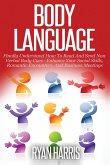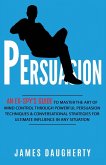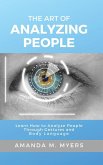Do you ever wonder what other people are thinking? Do you wish you could figure out what's going on inside someone else's head? Then Read Below. Since ancient times, we have used our body language to communicate, conveying our emotions and thoughts to those around us. Each person out there has a different body language, encompassing not only facial expressions but also body postures and gestures. Even eye movement is considered as part of the non-verbal communication, being closely followed by touch and using one's personal space. 80% of human communication is actually non-verbal. Some experts argue it may even be more. Body language is considered an integral element of non-verbal communication, being used, consciously or unconsciously, to interact with other people. It is often said that body language will serve to complement verbal communication. Through our gestures, postures and expressions, we are actually transmitting a lot of information about ourselves to the interlocutor. It is clear that the body language can make the difference between a successful interaction and one that is doomed to fail from the start. Basically, the information transmitted through non-verbal means, will ensure proper interaction between two or more people. However, due to cultural differences and other influencing factors, it is important to state that body language can sometimes lead to confusion or a state of ambiguity. One has to be able to use his/her body language to his/her own advantage, working at the same time to decipher the non-verbal information transmitted by the other person with utmost accuracy. In the end, by mastering the art of non-verbal communication, you will have more successful interactions with other people; reducing the risk of misunderstandings, confusion and social awkwardness. Here's What's Included In This Book: Best practises for Body Language Success Importance of Body Language Chemistry behind Body Language The 4 types of distances in Body Languages Body Language Signals - Lower Limbs Body Language Signals - Upper Limbs Body Language Signals - Above Neck Cultural Differences in Body Language Body Language in Different Social Situations








